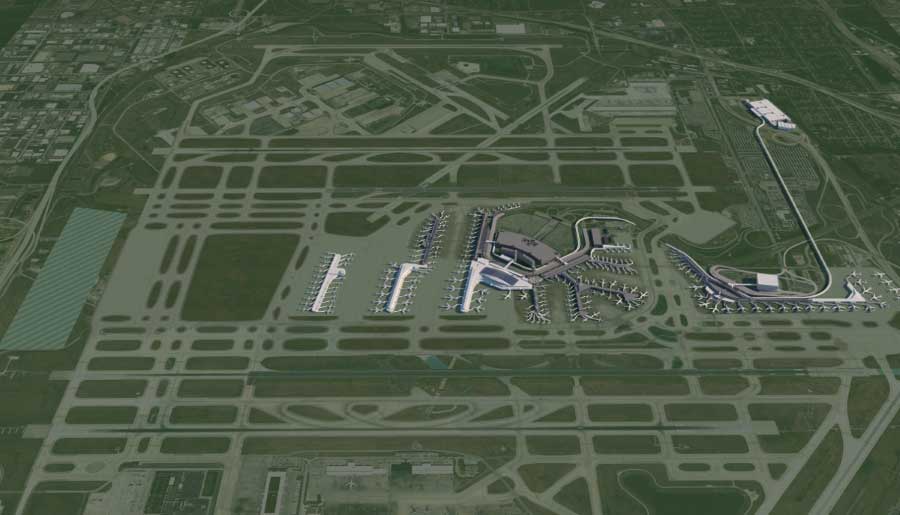$8.5 Billion O'Hare Airport Overhaul Approved

Chicago aldermen recently approved a $4-billion bond issue to begin preconstruction on an $8.5-billion overhaul of O’Hare International Airport. If completed as planned in eight years, it will be the biggest and most expensive reconstruction in the history of the 73-year-old airport.
The overhaul, dubbed O’Hare 21 by the city, will double the airport’s size by adding 3.1 million sq ft, add a new customs processing center in a new global terminal that will replace the existing Terminal 2, renovate three other existing terminals, add 25% more ramp space at gates to accommodate larger aircraft, increase the gate count to 235 from 185 and add two new remote satellite concourses.
“Our vision is to have a technology connection that incorporates pre-clearance of international passengers and screens their baggage.”
– Ginger Evans, Commissioner, Chicago Dept. of Aviation
Mayor Rahm Emanuel has said the entire cost would be paid back by airlines United, American, Spirit and Delta, but if, as expected, the city borrows against future landing fees, terminal rents and concession revenue to bankroll the entire project, O’Hare’s debt load will rise to $14.5 billion by 2022, according to Moody’s Investors Service. This is before the overhaul’s planned completion in 2026. Chicago has $7.2 billion in outstanding general airport revenue (for both O'Hare and Midway airports) and passenger facility charge debt before a new round of borrowing begins for the expansion.
The city and its Department of Finance believe that the Moody's forecast doesn't accurately account for the future value of airport business. The department believes O'Hare will receive more revenue in the next few years from concessions, added gates — many of which will come online before the whole project is completed — and more passengers served, making the additional debt more manageable. Fitch Ratings is among the agencies that rates the plan more favorably and has said that it views a new airline use and lease agreement (AUL) that started this month as an essential step to allow the airport to address both the modernization and the expansion and serve long-term growth for domestic and international service, as well as hub activities for anchor airlines United and American.
“Our idea for the global terminal is two-fold,” says Chicago Dept. of Aviation Commissioner Ginger Evans. “One is to place our international customers in the heart of O’Hare, which is where Terminal 2 is today, so they can connect to domestic flights in Terminal 1 with United and with American Airlines in Terminal 3.”
Evans says that thanks to security and technology upgrades, some international customers will be able to connect domestically without a second screening.
“[Part two of] our vision is to have a technology connection that incorporates preclearance of international passengers and screens their baggage,” she says. “We envision a terminal where a lot of passengers, but not all, will be able to arrive internationally and go directly to their domestic gate without having to go through security. That is very feasible.”
Terminal 5 is scheduled to be the first terminal to be expanded with construction starting in the second half of 2019. The department will prioritize proposals from architects and a designer for a connector tunnel as they are the critical path contracts. The department is also in the final stages of evaluating proposals for construction managers at-risk for the multibillion dollar Terminal Area Plan.



